- Home
- H. Rider Haggard
King Solomon's Mines (Barnes & Noble Classics Series) Page 27
King Solomon's Mines (Barnes & Noble Classics Series) Read online
Page 27
2 (p. 18) the Zambesi Falls: The Zambesi (more often spelled Zambezi) River divides Zambia from Zimbabwe. Along the river are a series of waterfalls, including the majestic Victoria Falls, a tourist attraction long before 1904, when the Victoria Falls Hotel and Victoria Falls Railway Station, both still extant, were built to accommodate visitors. Haggard may have intended to refer to these powerful falls, whose waters descend from a maximum height of 355 feet, at an average rate of 33,000 cubic feet per second.
3 (p.19) the Ophir of the Bible: In the Bible’s first book of Kings ( Kings 9:28; 1 Kings 22:48; etc.), Ophir is the destination for which King Solomon’s ships set out from the Gulf of Aqabah, to return with gold, gems, and other riches. Writers have claimed at various times that Ophir was really located in India, the Far East, Africa, and Arabia, and the debate continues.
4 (p. 19) Mashukulumbwe country: To the west of present-day Zimbabwe, the Mashukulumbwe tribe acquired their name, which means “underdogs,” after a defeat in battle, according to Robert Baden-Powell’s African Adventures (London: C. A. Pearson, 1937, chapter 11). The Suliman Mountains that Haggard mentions are fictitious.
5 (p. 19) Manica country: Manica is in the middle of present-day Mozambique, between the Zambezi and Luenha Rivers in the north and the Save River in the south. Near Manica, in the mountains near Zimbabwe, a gold rush attracted Europeans around 1900. Panning for gold continues today in local rivers.
6 (p. 20) Delagoa Portugee: This phrase refers to a member of the Portuguese community in Delagoa Bay, an inlet of the Indian Ocean on the east coast of southern Africa, at the northern limit of a series of lagoons lining the coast from Saint Lucia Bay in present-day Mozambique.
7 (p. 21) Boer tobacco pouch: The Western Australian Museum Archaeology Collection owns a Boer tobacco pouch made of woven fabric, originating from the Transvaal, South Africa (see http://museum.wa.gov.au/w099/10633.HTM). Pouches of more exotic material are also mentioned in other sources: In chapter 1 of Haggard’s novel Finished (London: Ward, Lock, 1917), Allan Quatermain is offered a pouch for Boer tobacco “made of lion skin of unusually dark colour.” Haggard offers his own translations for the local words Swart-vet-pens and rimpi.
8 (p. 24) a Bechuana: The Bechuana are a southern African Bantu people who in Haggard’s time lived in Bechuanaland (present-day Botswana), as well as Basutoland (present-day Lesotho), the Orange River Colony, and the western and northern districts of the Transvaal. Today they are also known by other names, including Tswana, Batswana, and Botswana.
Chapter 3
1 (p. 27) East London: Located in South Africa’s Eastern Cape province, East London is a scenic coastal city on the Indian Ocean with easy access to beaches where dolphins and whales still abound. Nearby Eastern Beach has developed a tourist industry attracting surfers to sites like the Nahoon Reef.
2 (p. 28) the English Mail: Ships from Great Britain carrying mail were given the ship prefix RMS (Royal Mail Ship) and were operated by such firms as the Royal Mail Steam Packet Company (RMSP). Tourism to South Africa developed by the turn of the century.
3 (p. 28) Berea: The old historical area of Durban, known as Berea, is a large and bustling port. Durban, whose Zulu name is Tekweni, lies in the province of KwaZulu-Natal, the ancestral home of the Nguni people. Durban is named after Sir Benjamin D’Urban, the first colonial governor in the early nineteenth century.
4 (p. 31) Sikukuni’s: Also spelled Secocoeni, Sikukuni was the name of a powerful native chief in the eastern Transvaal. The following extract is from chapter 1 of Haggard’s Cetywayo and His White Neighbours: or, Remarks on Recent Events in Zululand, Natal, and the Transvaal (London: Trubner and Company, 1882):Secocoeni, the powerful chief of the Bapedi, one of the tribes whose territories border on the Transvaal, came to a difference with the Boers over another border question. There is good ground for supposing that Cetywayo incited him to withstand the Boer demands; it is certain that during the course of the war that followed he assisted him with advice, and more substantially still, with Zulu volunteers.
To be brief, the Secocoeni war resulted in the discomfiture of the Transvaal forces. Another result of this struggle was to throw the whole state into the most utter confusion, of which the Dutch burghers, always glad of an opportunity to defy the law, took advantage to refuse to pay taxes. National bankruptcy ensued, and confusion grew worse confounded.
Cetywayo took note of all this, and saw that now was his opportunity to attack. The Boers had suffered both in morale and prestige from their defeat by Secocoeni, who was still in arms against them; whilst the natives were proportionately elated by their success over the dreaded white men.
5 (p. 31) Griqua: The Griqua people of southern Africa, also known as the Cape Hottentot people, are indigenous to sub-Saharan Africa. Displaced over the years from their tribal land (today’s Rooiberg and Luiperdskop), the Griqua have recently reacquired some of their land, and a Griqua Cultural Heritage Site is being planned. For more information, the Griqua National Conference may be reached by phone/fax in South Africa, +27 27 213 4848.
6 (p. 32) bump of caution: This is an ironic reference to the much-derided pseudo-science of phrenology, established by Viennese physician Franz Joseph Gall (1758-1828), to derive a subject’s character based on the bumps on his or her head. According to phrenologists, bumps on the back of the head express such qualities as love of children, love of women, love of fame, pride, constancy of affection, and caution or cowardice.
7 (p. 34) full choke both barrels: Choke is a constriction at or near the muzzle of a shotgun barrel that affects the way shot is dispersed, a refinement developed by the nineteenth-century gun makers Fred Kimball in the United States and W. W. Greener in England. A hunting gun with two barrels permits two different loads of ammunition with two different chokes. The first barrel might have a more open choke, allowing for a wide pattern of shot dispersal during a first, close-range shot. The barrel fired afterward can be full-choked, for a tighter, longer-range pattern to hit the prey as it tries to escape. A gun that is full-choked both barrels may be intended for two long-distance shots, perhaps at turkeys or other flying birds.
8 (p. 35) that unlucky Zulu War: The 1879 Zulu War (also called the Anglo-Zulu War) was fought between the Zulu nation, under their king Cetshwayo (also spelled Cetywayo and Cetewayo; c.1826-1884), and the British army. In 1877 the Transvaal became part of the British Empire, and the British became involved in a longstanding struggle between the Zulus and the Boers. In 1878 Sir Henry Bartle Frere, British commissioner for South Africa, used a minor border incident to demand that Cetywayo disband his army, which Cetywayo refused to do. In January 1879 British troops invaded Zululand, where Lord Frederic Chelmsford’s forces were defeated at the battle of Isandlwana. Further bloody battles ensued in the following months, until Cetywayo was captured by the British on August 28 and exiled to London. The Zulu War officially ended on September 1, 1879, and the victorious British divided Zululand among thirteen chiefs, which led to further conflicts.
9 (p. 35) Lukanga River: This vast wetland with swamp, open water, and seasonally flooded plains in Zambia is more commonly referred to as the Lukanga Swamp. It usually drains into the Kafue River, although on occasion the Kafue drains into the Lukanga system.
10 (p. 36) moocha: In his Smith and the Pharaohs, and Other Tales (Bristol: J. W. Arrowsmith, 1920; chapter 12), Haggard defines a moocha as a “waist-belt of catskins” worn by tribesmen. In his novel Heu-Heu; or, The Monster (London: Hutchinson, 1924; chapter 2) Haggard also describes a moocha as a hide “tied round [the stomach] by the leg skins, which hide seemed to have been dressed.”
Chapter 4
1 (p. 38) Lobengula: Lobengula (c.1833-1894) was king of Matabeleland (in present-day Zimbabwe). He resisted unsuccessfully against European colonizers after he sold the mineral rights for his land and the British South Africa Company began extensive mining.
2 (p. 38) the poisonous herb called “tulip”: The one-leaved Cape tulip (Homeria flaccid
a) and the two-leaved Cape tulip (Homeria miniata), members of the iris family (Iridaceae), are toxic weeds native to southern Africa. To the untutored eye they may be confused with lilies, but all parts of the Cape tulip are poisonous to livestock and humans. They cause heart and kidney failure, among other symptoms. Biosecurity technicians are particularly vigilant in preventing their growth.
3 (p.40) tambouki grass: This plant (Andropogon gayanus), also called tambuki grass and gamba grass, is a dense grass found in tropical Africa that favors monsoonal climates and is used for cattle grazing and hay. It is described as “tall and resinous tambouki grass” in Haggard’s short story “Hunter Quatermain’s Story,” reprinted in Hunter Quatermain’s Story: The Uncollected Adventures of Allan Quatermain (London: Peter Owen, 2003).
4 (p. 41) daccha: This substance is also called dagga, the Dutch term for Cannabis sativa (marijuana), a common intoxicant in Africa by the time British colonists arrived. Use of cannabis or dagga was considered by Europeans to demoralize the native manual laborers. In 1870 a law was passed in South Africa prohibiting the “smoking, use, or possession by the sale, barter, or gift” of marijuana on the part of any “coolies.” The law had little effect, and in 1887 an investigative committee, the Wragg Commission, discovered that native workers were still using cannabis. See Ernest L. Abel, Marihuana: The First Twelve Thousand Years (New York: Plenum Press, 1980).
5 (p. 44) I gave mine its quietus: That is, I killed it. This line is likely a reference to Hamlet’s “To be or not to be” soliloquy: “When he himself might his quietus make with a bare bodkin” (Shakespeare, Hamlet, act 3, scene 1).
6 (p.44) the Prince Imperial: Napoléon Eugene Louis Jean Joseph (1856-1879) the prince imperial of France, the only son of the late Emperor Napoleon III, was among those killed in the British army’s abortive invasion of Zululand in 1879 (see endnote 8, chapter 3). After studying at the Royal Military Academy at Woolwich, U.K., the Prince Imperial went to Africa with the permission of Queen Victoria to pursue his military and political ambitions. See Donald Featherstone, Captain Carey’s Blunder: The Death of the Prince Imperial, June 1879 (London: Leo Cooper, 1973).
Chapter 5
1 (p. 47) ant-bear: The aardvark (Orycteropus afer), also called the earth pig or the ant bear, is found throughout Africa. It feeds on termites by night and sleeps in burrows by day. It digs its own holes for shelter and also takes over termite nests. In one of these, Quatermain and his fellow travelers buried the remains of Khiva.
2 (p. 47) karoo shrub: In South Africa’s Western Cape province, the Great Karoo is a majestic arid zone, the largest plateau of its kind outside Asia. Its name is derived from the Khoi word karusa, meaning dry and barren. The region has a rich variety of shrubs and succulent plants (plants with thick, fleshy, water-storing leaves, like cacti).
3 (p.54) “Girl I left behind me”: A time-honored soldier’s marching song that originated around the year 1800. Its last verse reads:My mind her image still retains,
Whether asleep or waking;
I hope to see my dear again,
For her my heart is breaking:
But if e‘er I chance to go that way,
And that she has not resign’d me;
I’ll reconcile my mind and stay,
With the girl I left behind me.
Chapter 30 of William Makepeace Thackeray’s novel Vanity Fair (1847-1848) is entitled “The Girl I Left Behind Me.” Thackeray wrote: “So it is in the world. Jack or Donald marches away to glory with his knapsack on his shoulder, stepping out briskly to the tune of ‘The Girl I left Behind Me.’ It is she who remains and suffers,—and has the leisure to think, and brood, and remember.”
4 (p. 55) quagga: This subspecies of plains zebra (Equus quagga) of interior regions of southern Africa was hunted to extinction. The last extant quagga mare died at the Amsterdam Zoo on August 12, 1883. The quagga was yellowish-brown with stripes on its head and neck. A selective breeding program, the Quagga Project, began in 1987 to retrieve quagga genes in order to produce a quagga comparable to those preserved in museums. For more information, see www.museums.org.za/sam/quagga/quagga.htm.
5 (p. 56) they came, “not as single spies, but in battalions”: This is a reference not to the Old Testament but to Shakespeare’s Hamlet (act 4, scene 5): “When sorrows come, they come not single spies, but in battalions.” The misattribution is one of Haggard’s jokes about Quatermain’s limited grasp of literature; his knowledge was restricted to the Bible and The Ingoldsby Legends.
6 (p. 57) The Black Hole of Calcutta: “Black hole” was the common name for a military detention cell until the nineteenth century. In 1756 Siraj-ud-Dawlah, the nawab of Bengal, occupied Fort William in Calcutta and imprisoned British soldiers in a small, airless space. Many died by the following day, providing effective anti-Indian propaganda for the British. The exact number of dead is still debated by historians.
Chapter 6
1 (p. 59) Jackdaw of Rheims: In this verse chapter from The Ingoldsby Legends, by Canon Richard Harris Barham (1788-1845), a cardinal’s ring disappears. The cardinal curses the thief, and the rundown appearance of the jackdaw—a crow-like bird—identifies him as the culprit.
2 (p. 60) Springbok spoor: The springbok (Antidorcas marsupialis) is a southern African gazelle noted for its leaps. Spoor is the trail of a wild animal.
3 (p. 61) the world-famed one at Cape Town: Haggard compares the fictitious mountains of Sheba’s breasts to Cape Town’s well-known landmark Table Mountain. At 3,563 feet above sea level and made of sandstone, Table Mountain offers magnificent views and has inspired a variety of local legends.
4 (p. 62) biltong: The name of this southern African dried meat specialty, made from ostrich or other game, comes from the Dutch bil, meaning “rump,” and tong, meaning “strip.”
5 (p. 63) the Island of Ascension: Ascension Island, in the south Atlantic Ocean, is covered with jagged lumps of black volcanic clinker.
6 (p. 64) like Nebuchadnezzar: Nebuchadnezzar was a Babylonian king who, according to the biblical book of Daniel (4:33) “was driven from men, and did eat grass as oxen, and his body was wet with the dew of heaven, till his hairs were grown like eagles’ feathers, and his nails like birds’ claws” (KJV). This was in punishment for his prideful self-sufficiency and rejection of the Almighty’s authority.
Chapter 7
1 (p. 73) champaign country: From the Old French word champaigne (or in modern French, campagne), this phrase denotes flat, open country, as John Milton described in the third book of Paradise Regained: “Fair champaign, with less rivers interveined.”
2 (p. 75) the great road over the St. Gothard in Switzerland: The Saint Gothard Pass in the Alps joins Switzerland and Italy, and provides many picturesque views. Travel across the pass was difficult during snowy winter months until 1882, when the Saint Gothard railway tunnel was constructed.
3 (p. 82) the Bayéte of the Zulus: Bayete Nkosi was the greeting (“We greet you! Hail!”) used by the Zulu nation to address their mighty leader King Chaka (see note 2 to the Introduction). Today a company in Cape Town, South Africa, Bayete Products (see www.bayetefootwear.co.za) sells Bayete sandals, thongs, and handbags. Other companies in South Africa’s hospitality industry use the word, like Bayete Zulu Safaris (www.bayetezulusafaris.ix.co.za) and the Bayete Bed & Breakfast in Durban (www.savenues.com/kznlbayete.htm).
Chapter 8
1 (p. 84) civil war: A series of civil wars mark the history of the Zulus. In the Zulu Civil War of 1840, the Zulu leader Dingane was defeated by his brother Mpande. The Zulu Civil War of 1856 pitted two brothers, Cetshwayo and Mbulazi, in a battle over succession rights; Cetshwayo vanquished and executed his brother. See Jeff Guy, The Destruction of the Zulu Kingdom: Civil War in Zululand, 1879-1884, (London: Longman, 1979); also Ian Knight, The Anatomy of the Zulu Army: From Shaka to Cetshwayo, 1818-1879 (London: Greenhill Books, 1995).
2 (p. 87) Sakabwla: This is probably a misprint for Sakabula, the Zulu name for the long-tai
led widow bird (Euplectes progne). Sakabula means “show-off’; the birds’ 20-inch red and yellow tail feathers are strikingly deployed to attract female birds. Zulu soldiers tied ostrich, blue crane, and sakabula feathers to their headdresses to add height and make themselves more terrifying to enemies.
Chapter 9
1 (p.93) Unlimited Loo: Loo, a game for five or more players, became popular in England starting in the seventeenth century. There were two forms. In the quiet domestic game called Limited Loo, the money added to the pool was a modest and fixed amount; Limited Loo is mentioned in some Jane Austen novels, including Pride and Prejudice. In Unlimited Loo, the amount of the pool can increase rapidly, leading to great wins and great losses in a short time. It may have been this version of the game that Alexander Pope cited in his poem ”The Rape of the Lock” (1712) (canto 3): “Ev’n mighty Pam [the Jack], that Kings and Queens o’erthrew / And mow’d down armies in the fights of Lu.”
2 (p. 95) a splendid tiger-skin karross: In southern Africa, a karross (or kaross) is a sleeveless cloak made of sheepskin or other animal hide, with the hair left on. Karross is also used to describe leopard-skin cloaks worn by tribal chiefs. The etymology of the word is uncertain; it may be related to the Dutch word kuras or the English cuirass (a protective breastplate).
Chapter 10
1 (p. 103) the Amazulu: The original name for the Zulu people, amaZulu means “the people of heaven.”
2 (p. 108) kerries: More often spelled kierie, this Afrikaans word describes a club used in battle. Along with spear, bow, and arrows, the kierie was part of Zulu tribal regalia. A knobkerrie—in Afrikaans knopkierie—joined knop (“knob”) to kierie (“club”) to describe a shorter, knobbed club made of wood; Zulu warriors battered enemies with these clubs at close range or, if farther away, threw them.

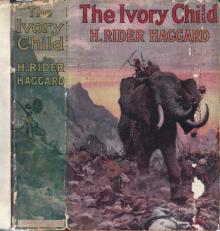 The Ivory Child
The Ivory Child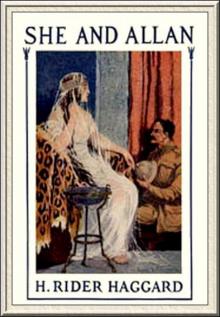 She and Allan
She and Allan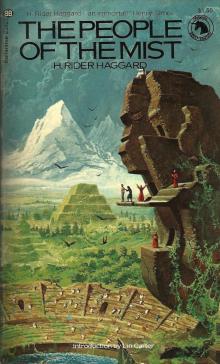 The People of the Mist
The People of the Mist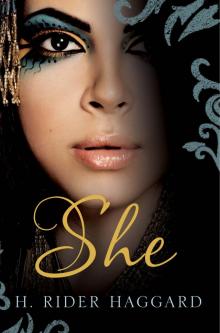 She
She Morning Star
Morning Star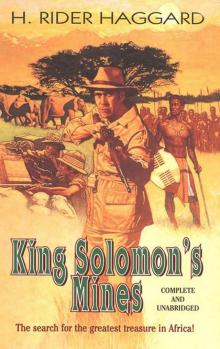 King Solomon's Mines
King Solomon's Mines She: A History of Adventure
She: A History of Adventure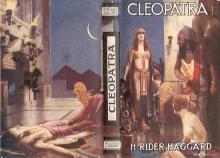 Cleopatra
Cleopatra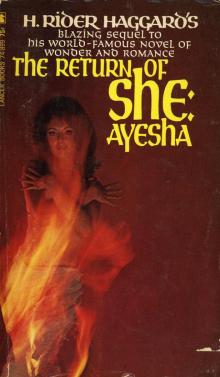 Ayesha, the Return of She
Ayesha, the Return of She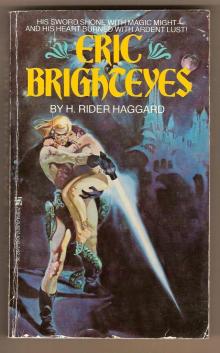 Eric Brighteyes
Eric Brighteyes Red Eve
Red Eve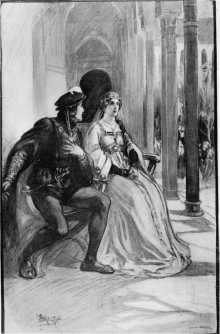 Fair Margaret
Fair Margaret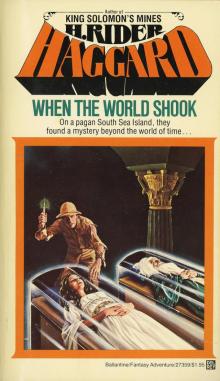 When the World Shook
When the World Shook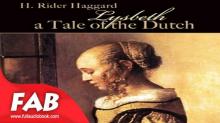 Lysbeth, a Tale of the Dutch
Lysbeth, a Tale of the Dutch Moon of Israel: A Tale of the Exodus
Moon of Israel: A Tale of the Exodus Long Odds
Long Odds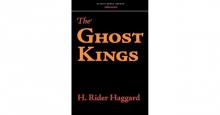 The Ghost Kings
The Ghost Kings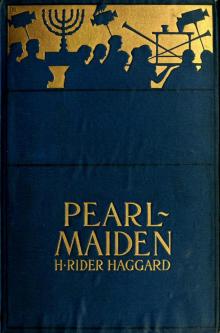 Pearl-Maiden: A Tale of the Fall of Jerusalem
Pearl-Maiden: A Tale of the Fall of Jerusalem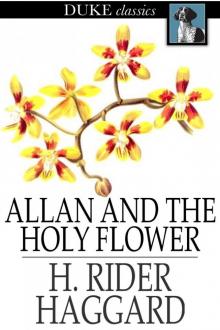 Allan and the Holy Flower
Allan and the Holy Flower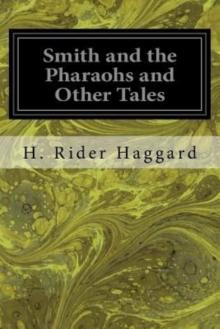 Smith and the Pharaohs, and other Tales
Smith and the Pharaohs, and other Tales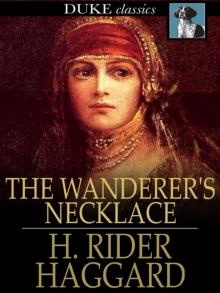 The Wanderer's Necklace
The Wanderer's Necklace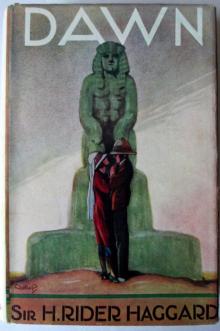 Dawn
Dawn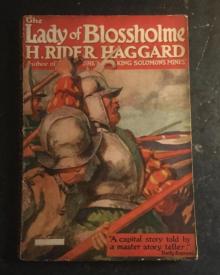 The Lady of Blossholme
The Lady of Blossholme Stella Fregelius: A Tale of Three Destinies
Stella Fregelius: A Tale of Three Destinies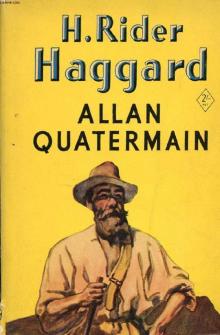 Allan Quatermain
Allan Quatermain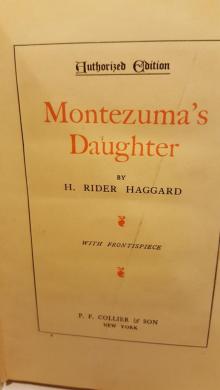 Montezuma's Daughter
Montezuma's Daughter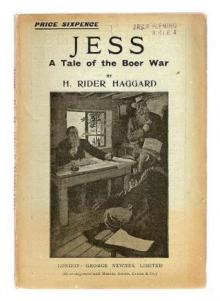 Jess
Jess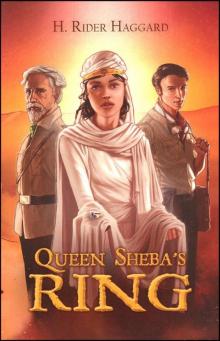 The Brethren
The Brethren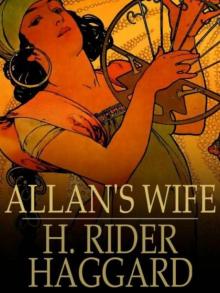 Allan's Wife
Allan's Wife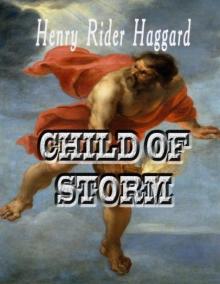 Child of Storm
Child of Storm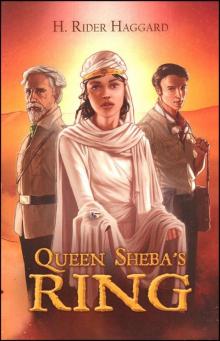 Queen Sheba's Ring
Queen Sheba's Ring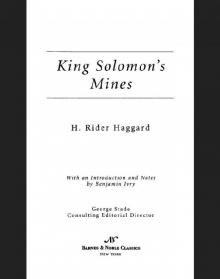 King Solomon's Mines (Barnes & Noble Classics Series)
King Solomon's Mines (Barnes & Noble Classics Series)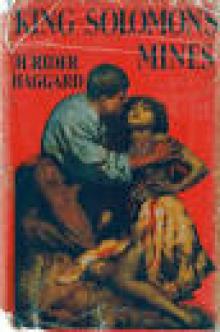 Complete Allan Quatermain Omnibus - Volumes 1 - 10
Complete Allan Quatermain Omnibus - Volumes 1 - 10